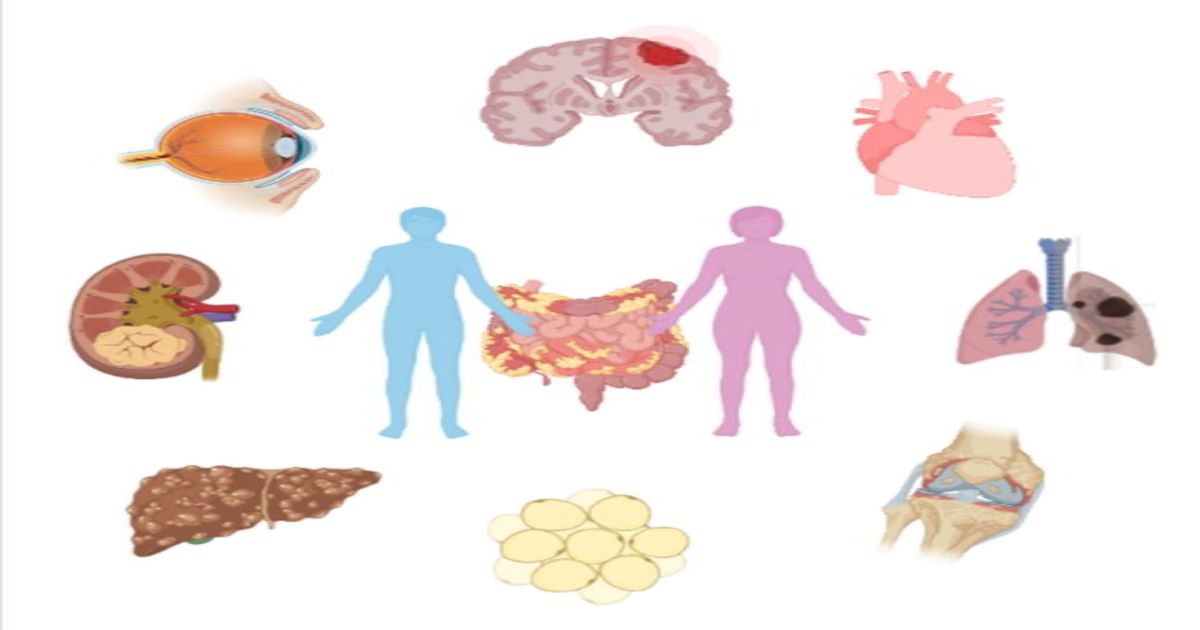Topic Menu
► Topic MenuTopic Editors

New Insights on Chronic Illness: Pathogenesis, Prevalence, Prevention, and Systemic Therapies

Topic Information
Dear Colleagues,
Prior to the COVID-19 pandemic, chronic illnesses including heart disease, cancer, lung disease, stroke, Alzheimer’s disease, diabetes, and kidney disease were responsible for more than 70% of global deaths annually. Though traditionally more prevalent in older adults (70+ years), chronic illnesses are becoming more prevalent in younger adults (30–69 years), with more than 85% of these “premature” deaths occurring in low- and middle-income countries. Early data suggest SARS-CoV-2 infection is associated with the increased prevalence of many chronic illnesses, threatening an already overburdened global healthcare system.
In recent years, technological advances have allowed for substantial growth in elucidating the molecular mechanisms underpinning many chronic illnesses. However, with an increasing proportion of individuals experiencing more than one chronic illness, there remains a lack of knowledge on how individual disease pathogeneses may exacerbate underlying complications. In this Topic, entitled “New Insights on Chronic Illness: Pathogenesis, Prevalence, Prevention, and Systemic Therapies”, we welcome original research, clinical observations, reviews, and systematic reviews which provide novel insights into the area of chronic disease. Areas of interest include but are not limited to:
- Diabetes
- Obesity
- Heart disease
- Cancer
- Lung disease
- Stroke
- Kidney disease
- Arthritis
- Asthma
- Oral diseases
Dr. Ram Prasad
Dr. Suresh K. Verma
Topic Editors
Keywords
- chronic illness
- cancer
- asthma
- heart diseases
- hypertension
- arthritis
- kidney diseases
- stroke
- diabetes
- lung diseases (eg. COPD)
- brain injury
- oral diseases
- pathogenesis
- treatment
Participating Journals
| Journal Name | Impact Factor | CiteScore | Launched Year | First Decision (median) | APC |
|---|---|---|---|---|---|

Biomedicines
|
4.7 | 3.7 | 2013 | 15.4 Days | CHF 2600 |

Cancers
|
5.2 | 7.4 | 2009 | 17.9 Days | CHF 2900 |

Healthcare
|
2.8 | 2.7 | 2013 | 19.5 Days | CHF 2700 |

Journal of Cardiovascular Development and Disease
|
2.4 | 2.4 | 2014 | 20.3 Days | CHF 2700 |

Journal of Clinical Medicine
|
3.9 | 5.4 | 2012 | 17.9 Days | CHF 2600 |

MDPI Topics is cooperating with Preprints.org and has built a direct connection between MDPI journals and Preprints.org. Authors are encouraged to enjoy the benefits by posting a preprint at Preprints.org prior to publication:
- Immediately share your ideas ahead of publication and establish your research priority;
- Protect your idea from being stolen with this time-stamped preprint article;
- Enhance the exposure and impact of your research;
- Receive feedback from your peers in advance;
- Have it indexed in Web of Science (Preprint Citation Index), Google Scholar, Crossref, SHARE, PrePubMed, Scilit and Europe PMC.


